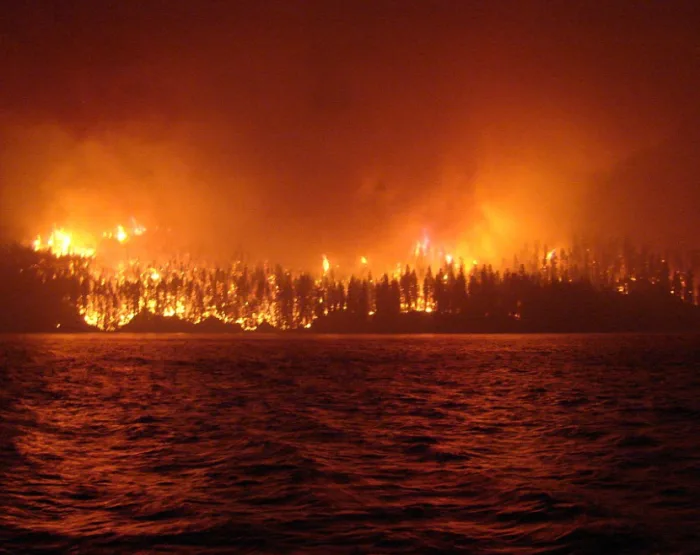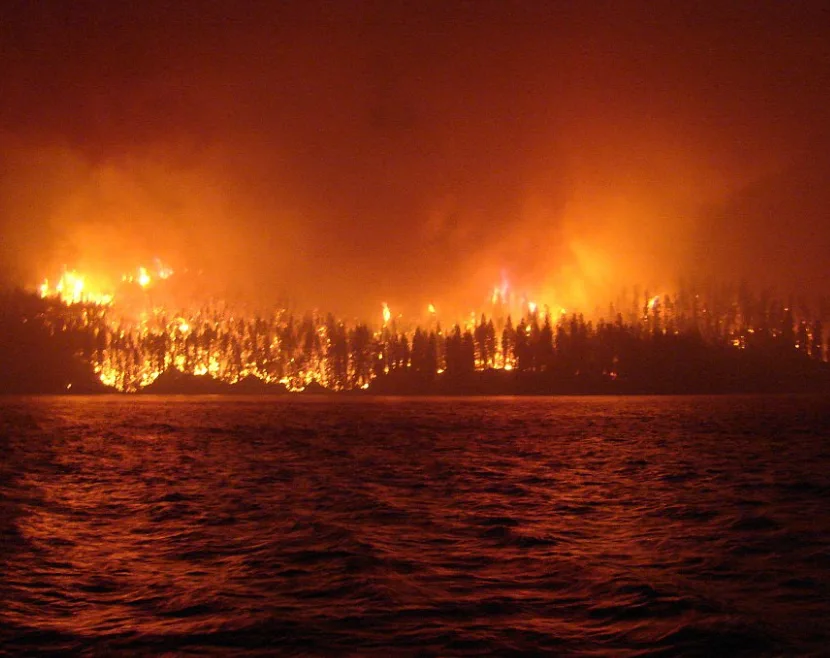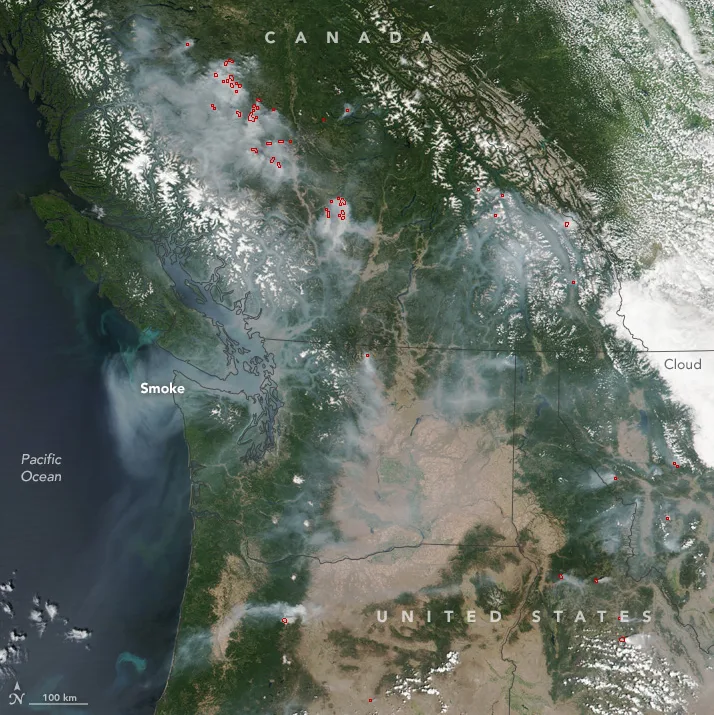
Smoke from 2017 B.C. wildfires used to study potential impacts of nuclear war
Scientists are studying the unprecedented smoke that was released from British Columbia's wildfires in 2017 to explore what would happen if a nuclear war broke out. The study was recently published in the peer-reviewed academic journal Science.
The smoke from B.C.'s severe wildfires created the largest pyrocumulonimbus cloud that has ever been observed, which circled the majority of the Northern Hemisphere.
Black carbon (soot) from this enormous cloud reached the lower stratosphere and researchers say that the impacts from this cloud can be used to better understand what would happen if fires burnt down cities and industrial areas during a nuclear war.

Ashcroft Reserve wildfire burning at Loon Lake, BC. Credit: Wikimedia Commons
The researchers analyzed the speed that the smoke plume rose at, how it spread across the stratosphere, and how it reacted with photochemical components in the ozone layer to model what would happen if a bigger dark cloud were to form.
WATCH BELOW: WILDFIRES CAN ACTUALLY CREATE THEIR OWN THUNDERSTORMS, HERE'S HOW
Aerosols and black carbon are released when fossil fuels and other organic matter, such as trees, are burned and can lower air temperatures either directly by reflecting sunlight towards space, or indirectly by increasing the amount of sunlight that clouds reflect away from Earth.
If enough aerosols and other particulate matter from burning material is released into the atmosphere from a nuclear war, scientists say that the widespread cooling could create a 'nuclear winter.'
This means that a significant amount of cooling from the burning activity could cause an unprecedented decline in global temperatures, which would have devastating effects on agriculture, even if nuclear weapons were used thousands of kilometres away.

Smoke from B.C. wildfires in 2017. Credit: NASA
In an interview with CBC, the study's co-author, Alan Robock, said that a war between large superpowers could cause temperatures to drop below the freezing level during the summer months, which would cause agriculture to grind to a halt and could trigger mass starvation.
The smoke cloud from the B.C. wildfires contained approximately 0.3 million tons of soot. The study theorizes that a nuclear war between India and Pakistan could produce 15 million tons of soot and a U.S. vs. Russia war could cause 150 million tons.
The researchers say that B.C.'s wildfire event in 2017 produced enough soot that had impacts comparable to what could be produced in one of these hypothetical nuclear war scenarios.
Future areas of study for these researchers include investigating the potential impacts on food production on land and in the ocean, as well as the potential for global famine.
With files from CBC News.
Sources: Rutgers Today | Science